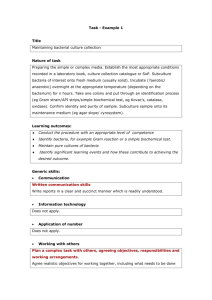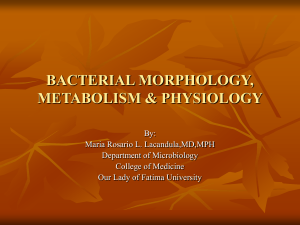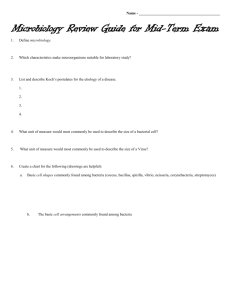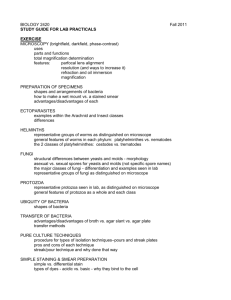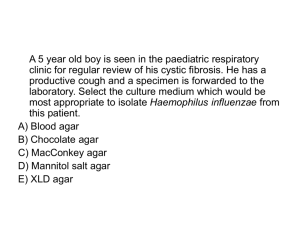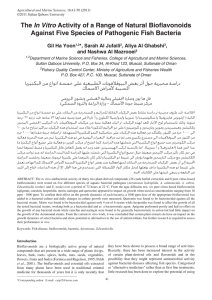Culture techniques
advertisement
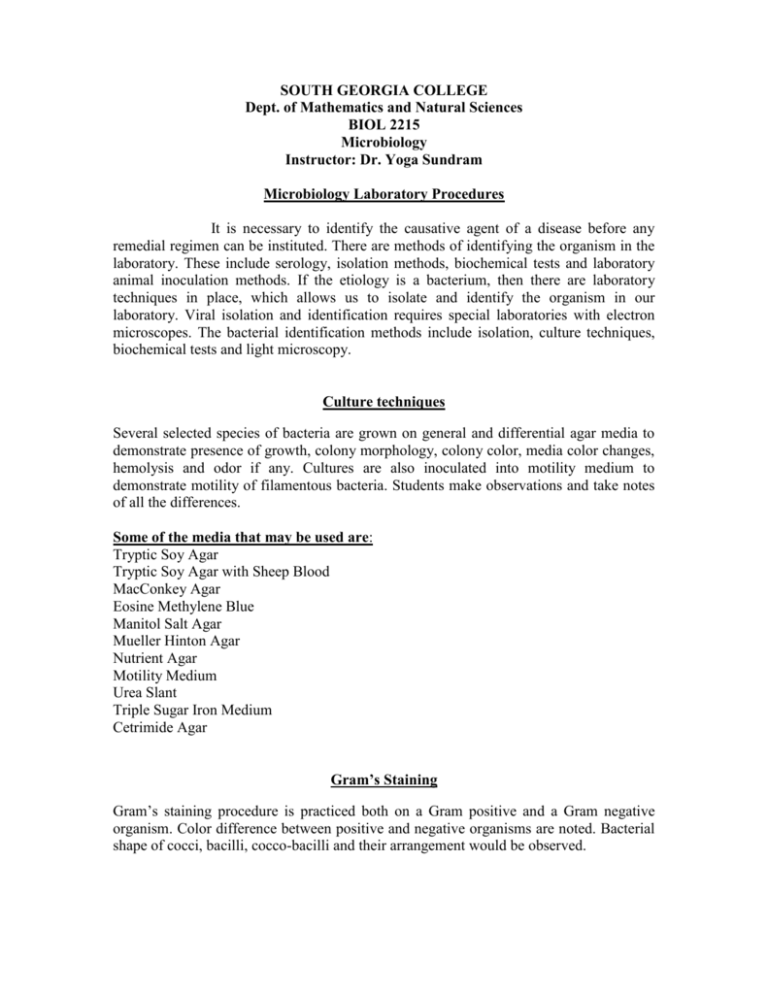
SOUTH GEORGIA COLLEGE Dept. of Mathematics and Natural Sciences BIOL 2215 Microbiology Instructor: Dr. Yoga Sundram Microbiology Laboratory Procedures It is necessary to identify the causative agent of a disease before any remedial regimen can be instituted. There are methods of identifying the organism in the laboratory. These include serology, isolation methods, biochemical tests and laboratory animal inoculation methods. If the etiology is a bacterium, then there are laboratory techniques in place, which allows us to isolate and identify the organism in our laboratory. Viral isolation and identification requires special laboratories with electron microscopes. The bacterial identification methods include isolation, culture techniques, biochemical tests and light microscopy. Culture techniques Several selected species of bacteria are grown on general and differential agar media to demonstrate presence of growth, colony morphology, colony color, media color changes, hemolysis and odor if any. Cultures are also inoculated into motility medium to demonstrate motility of filamentous bacteria. Students make observations and take notes of all the differences. Some of the media that may be used are: Tryptic Soy Agar Tryptic Soy Agar with Sheep Blood MacConkey Agar Eosine Methylene Blue Manitol Salt Agar Mueller Hinton Agar Nutrient Agar Motility Medium Urea Slant Triple Sugar Iron Medium Cetrimide Agar Gram’s Staining Gram’s staining procedure is practiced both on a Gram positive and a Gram negative organism. Color difference between positive and negative organisms are noted. Bacterial shape of cocci, bacilli, cocco-bacilli and their arrangement would be observed. Biochemical Tests. These tests are used to differentiate organisms by their metabolic activity such as fermentation of carbohydrates, catalytic actions, presence of enzymes, ability to breakdown chemicals and gas production. Indicator dyes incorporated in these chemical reagents facilitate visual changes in color. Based on color changes or color change, bacteria can be categorized as positive or negative reactors. Some of the tests that may be used are: Citrate Test Indole Test Methyl Red Test Oxidase Test Catalase Test Coagulase Test Urea Test VP Test Triple Sugar Iron Test Identifying an unknown bacterial culture Student will be given a numbered bacterial culture for identification. He or she will grow the bacterium and perform whatever test needed to identify the bacterial species. They use a process of elimination to narrow it down to the most probable identity. They then confirm the bacterial culture by selecting additional tests and growing the culture on differential media. This allows them to conclusively identify the unknown culture. Performing Tests Most tests are performed in groups of two but the reports have to be submitted separately. The identification of unknown bacterial culture is done individually. On reviewing the initial report, the instructor may make comments and recommendation. Students may do the additional procedures based on these recommendations. Laboratory Days Laboratory 1. ( Week 1 ) Introduction and safety protocol Use of microscope Laboratory 2. ( Week 2 ) Colony morphology Laboratory 3. ( Week 3 ) Colony morphology : Report 1 Laboratory 4 ( Week 4) Gram Staining and bacterial shape: Report 2 Laboratory 5. ( Week 5 ) Biochemical tests- set 1: Report 3 Laboratory 6. ( Week 6 ) Biochemical tests- set 2: Report 4 Laboratory 7. ( Week 7 ) Biochemical tests- set 3: Report 5 Laboratory 8 ( Week 8 ) Antibiogram: Report 6 Laboratory 9 ( Week 9) Unknown identification: Preliminary Laboratory 10 (Week 10) Unknown identification Preliminary Laboratory 11(Week 11) Unknown identification : Preliminary Report 7 Laboratory 12(Week 12 ) Unknown identification: Final: Laboratory 13(Week 13 ) Unknown identification: Final: Report (8) Attendance It is to your advantage that you attend all labs. You need to know all the tests and procedures first hand so that it can be used to identify the unknown culture. Do not depend on your partner for information. Too many absences will be noted and may go against you. Make notes of all you do and refer to these notes when identifying your culture. Your reports will indicate as to whether the work was yours or someone else’s. Grading A total of 100 points will be awarded for performing tests successfully and presentation of reports on schedule. Points will be divided as follows: 5 points each for lab reports 1 through 6 = 30 Preliminary Report = 30 Final Report = 40 100 Points for the first 5 reports are awarded based on accuracy of tests performed and interpretation. Points for the initial report is based on valid arguments for selection of tests, logical elimination process and tentative identification Final report needs to be well presented following a research report format, with all the data from the initial report and any additional data included. It will have an introduction, a preamble, materials and methods, results in the form of tabulations and flow charts, discussion and conclusion. At the end of the report, a bibliography should be included. The final report will carry more points if it is well organized, neat and presented as a report folder.

